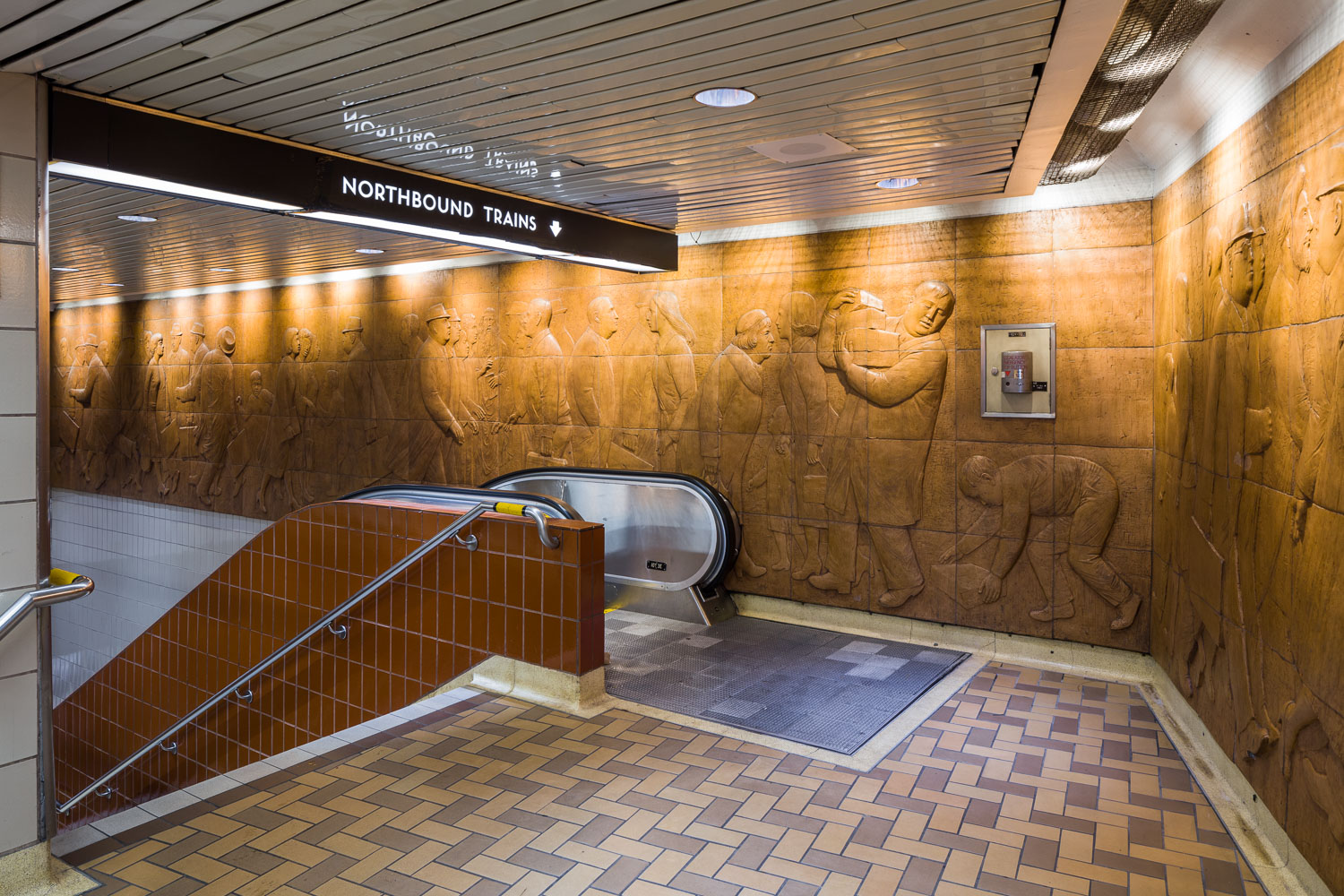Cross Section depicts a vibrant urban scene of pets, shoppers, business people and other commuters. The 1984 bas-relief piece is created out of terra cotta and appears near the escalators.
Explore
Cross Section

- Terra Cotta
- 1984
- Dundas Subway Station, Toronto
About the artwork
About the artist
William McElcheran, “Canada’s least-known well-known artist”, as he called himself, was an architect, sculptor and painter. He was born in Hamilton and came from a large, musical Baptist family. McElcheran began modeling portraits as a boy at the age of 10. When he was 16, he was granted an advanced second-year standing at the Ontario College of Art where he studied until 1948, where he received training as a carpenter and designer. During his time at the College, he earned a painting scholarship, and upon graduating at the top of his class in 1948, was awarded the Lieutenant-Governor’s Medal.
In the mid-fifties, he was employed by Bruce Brown and Brisely Architects in Toronto as a liturgical designer. During his employment, he became their lead designer for church and university buildings, and made a significant impact on architectural interior design. In 1958, he played a major role in the development of McMaster Divinity College and Chapel, contributing sculptures in stone and wood to the interior.
McElcheran began sculpting in the early sixties with wood, and later used bronze and other materials. After 1970, McElcheran started work on his pieces The Crowd, The (Rat) Race and Businessman, for display in Canadian cities. He moved to Italy in 1975 and also lived in the United States, Thailand and Japan. He continued to develop themes of futility and corporatization in his sculptures until his death.
Fun facts
- McElcheran began modeling portraits as a boy and initially trained as a carpenter and designer. However, during his time at college, he earned a painting scholarship, and upon graduating at the top of his class, was awarded the Lieutenant-Governor's Medal. From carpenter to painter, McElcheran mastered its creative skills from an early age.
Engagement questions
- Do you think art should only include a certain kind of practices and forms? Are there any limits to creativity and visual representation?
- How can we grant praise and consideration to design and art crafts?
